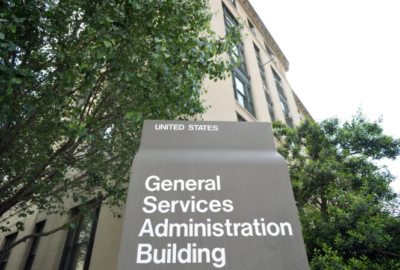

The General Services Administration introduced a host of bots powered by robotic process automation for its own operations, but now it's looking to have RPA play a...
The General Services Administration has led the charge on introducing bots powered by robotic process automation for its own operations, but now it’s looking to have RPA play a bigger role in its rollout of Centers of Excellence to other agencies.
Anil Cheriyan, the director of GSA’s Technology Transformation Services and deputy commissioner of the Federal Acquisition Service, said Monday that the agency plans to develop a community of practice where agencies looking to get started with RPA can get support from more experienced agencies and trusted vendors.
Ed Burrows, GSA’s RPA program manager in the Office of the Chief Financial Officer, will lead the community of practice.
“The community of practice right now is really getting us all together and talking about which vendors are you using,” Cheriyan said at the GITEC Emerging Technology Conference in Annapolis, Maryland. “What’s the approach that you’re taking? How do you share that information?”
Since January, GSA has had 10 bots operating and has been releasing new ones at a rate of about one per month since February 2018. In addition, Cheriyan said GSA is rolling out “intelligent” process automation, or RPA powered by artificial intelligence.
“This is a real way of driving progress without having to re-engineer all the systems,” Cheriyan said. “I think that’s going to be useful when you talk about modernizing processes. That’s really a useful tool that we need to build on.”
GSA is also looking to take the next step on identity proofing. GSA already provides a “thin layer” of basic authentication through Login.gov, but Cheriyan said the goal is to provide identity proofing for a wide swath of agencies including the Social Security Administration, the IRS and the Department of Homeland Security.
“This is something that if we can get that solved, that would be a significant area,” Cheriyan said.
These efforts are part of GSA’s Centers of Excellence initiative, aimed at transforming the way agencies do business internally and how they interact with external customers. Cheriyan expects to bring CoEs to three agencies this year, and another three agencies next year.
The departments of Agriculture and Housing and Urban Development already have CoE efforts underway, but GSA considers USDA its “lighthouse” agency, and an example for others to follow.
Under the CoE initiative, USDA will reduce its inventory of data centers from 38 to two, and will streamline its 30 call centers down to one by the end of July.
These IT infrastructure updates will play a role in streamlining the way agencies deliver services. At USDA, for example, farmers who apply for a farm loan have to wait about a year to receive the funding and must navigate several rounds of paperwork and bureaucracy.
Cheriyan, a former chief information officer at Suntrust Bank, said that’s a significant departure from his experience in private banking, where the goal was to get commercial loans out the door in less than 10 days.
“You’re entering data over 15 different times in 15 different systems, and the same information that has been asked a few over and over and over again,” he said. “That whole client experience has got to change.”
The consolidation of call centers, he added, should also reduce some of the confusion farmers face when trying to seek assistance over the phone.
“If you’re a farmer and you’re calling USDA for some particular help, you were getting different answers depending on whether you called a number in Arkansas or a number in North Dakota. And oftentimes when you called, you’d get transferred from one place to the other. Our citizens were really finding that their questions were not being answered,” Cheriyan said.
At this rate, Cheriyan estimated that a governmentwide IT transformation would take about 10 or 15 years to complete, but would put government services more in line with what the private sector offers its customers.
“I’m not sure we will ever catch up with the private industry, but we will certainly get a long way down,” Cheriyan said, adding that agencies will measure their progress on the impact made to customer service, and would base metrics directly on feedback from customers.
“Are we talking about real outcomes, or are we just calculating how many data centers we have? That’s not relevant, as far as I’m concerned. It doesn’t mean anything — it’s not about how many applications we move to the cloud, it’s really about what’s the change that’s happened. What is the real benefit to the citizens? What is the real benefit to the federal employees?”
Copyright © 2025 Federal News Network. All rights reserved. This website is not intended for users located within the European Economic Area.
Jory Heckman is a reporter at Federal News Network covering U.S. Postal Service, IRS, big data and technology issues.
Follow @jheckmanWFED


